Sweet, savory, and full of flavor, this delicious Homemade Eel Sauce recipe is the dream sauce for Japanese broiled eel fillets and BBQ dishes. You only need four ingredients!
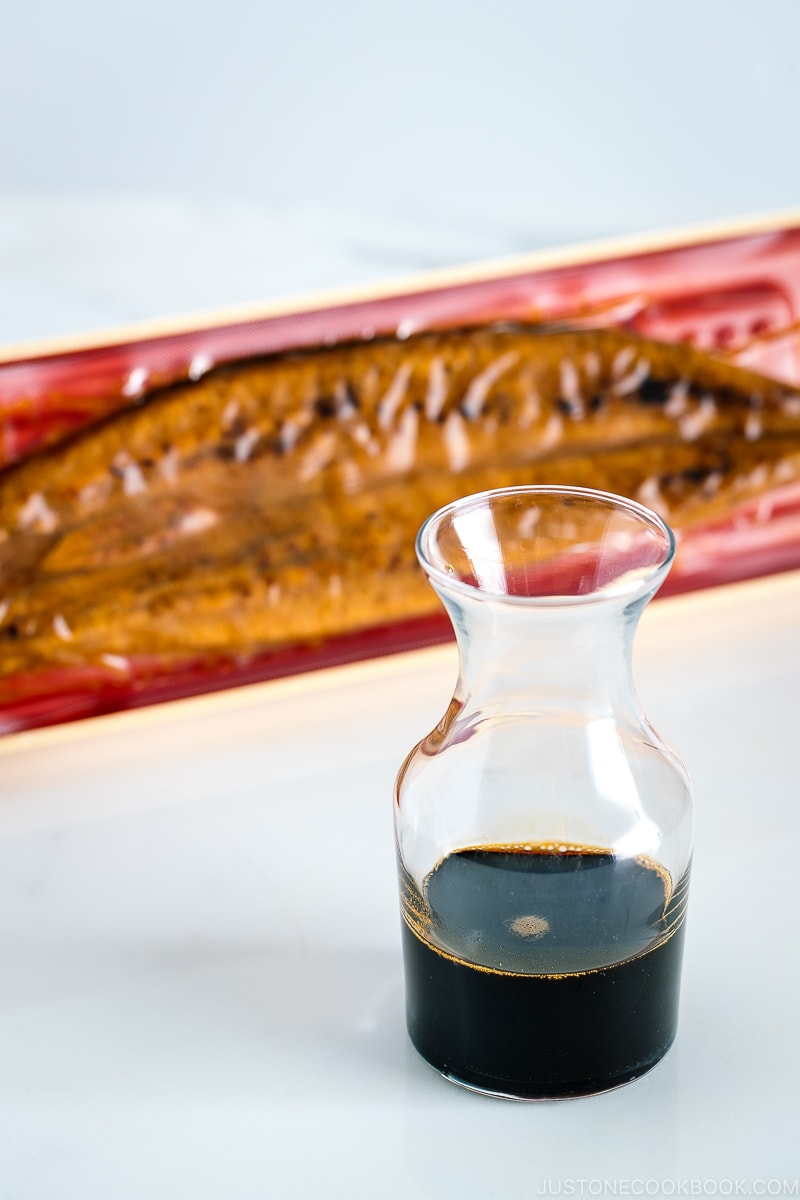
Eel sauce, or unagi no tare (うなぎのたれ), is a thick and sweetened soy sauce. Traditionally, it is used on grilled eel or dishes that feature grilled eel, such as unagi don or unagi sushi, and doesn’t contain eel.
Table of Contents
What Is Eel Sauce
What is that caramelized brown sauce with a syrup-like consistency that goes with unagi? Well, the irresistible glossy sauce is Eel Sauce or Unagi Sauce.
Although many commercial sauce brands are available, the best eel sauce is the homemade version.
What Does It Taste Like
It tastes savory-sweet from the sake, soy sauce, mirin, and sugar. Since the ingredients are the same as teriyaki sauce, you might wonder if eel sauce is the same. Yes, both sauces are similar, but you’ll notice the slight differences in the richness and sweetness.
If you want authentic Japanese teriyaki sauce, get my recipe here.
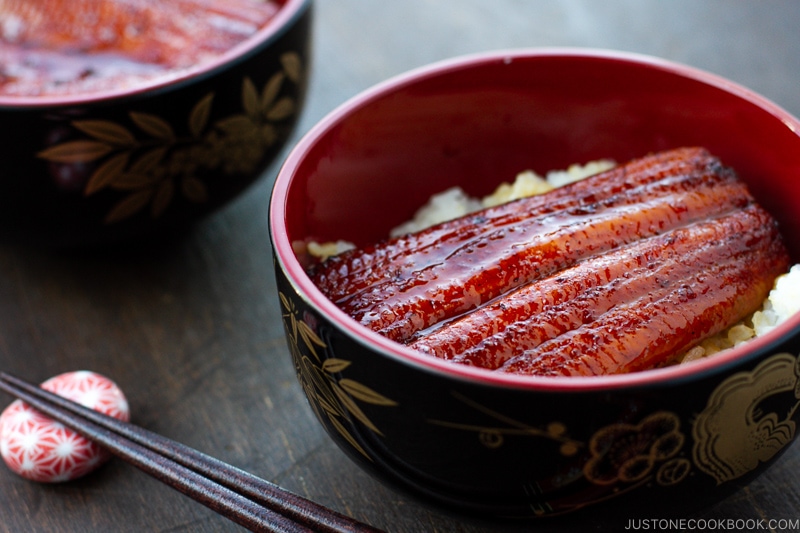
How to Make Eel Sauce
Making homemade unagi sauce is as simple. You only need four ingredients to create a rich, umami-packed sauce.
The Ingredients You’ll Need
- Sake (Japanese Rice Wine) – Adds umami to the sauce (the alcohol will burn off during cooking, so it’s suitable for all ages).
- Mirin (Sweet Rice Wine) – Adds a mild sweetness and luster to the sauce.
- Soy sauce – Use Japanese soy sauce as it tastes different from Chinese, Korean, or Thai. Use Gluten-Free Soy Sauce or Tamari to make a gluten-free sauce.
- Sugar – Besides sweetness, sugar is a thickener, so it’s easy to pour.
Sake, mirin, and soy sauce are essential staples for Japanese cooking, so it’s worth stocking up if you’re thinking of cooking your favorite Japanese recipes.
Note: Authentic unagi sauce does not use rice vinegar as it adds an acidic tang and does not contribute to the integrity of the sauce. Also, don’t add garlic, ginger, or cornstarch to the sauce. It wouldn’t be unagi sauce with all these additions or it’ll overwhelm the unagi.
The Cooking Step
- Combine the mixture in a small saucepan and simmer on medium heat until the sauce caramelizes and thickens to your desired richness.
The great thing about making the sauce instead of buying the bottled variety is you can decide on the balance of sweet and salty. Plus, there are no additives or preservatives.
How To Use Eel Sauce
Aside from unagi dishes, unagi sauce is finger-licking delicious on BBQ. Think grilled fish, pan-fried chicken, tofu, mushrooms, and onigiri rice balls. All you need is a light brush or a drizzle of this sweet-savory sauce to heighten the flavor. In addition, you can use it as a marinade for meats or as a dressing for noodles.
Recipes for Eel Sauce
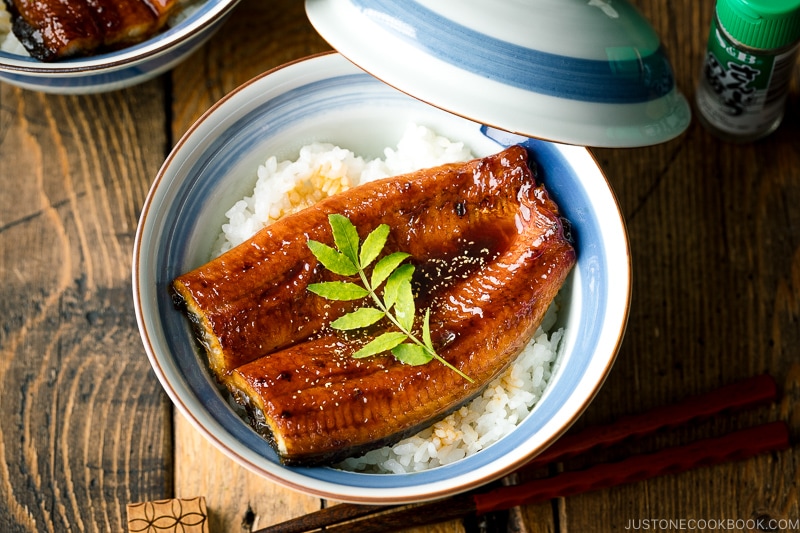
Unadon (Grilled Eel Rice Bowl)
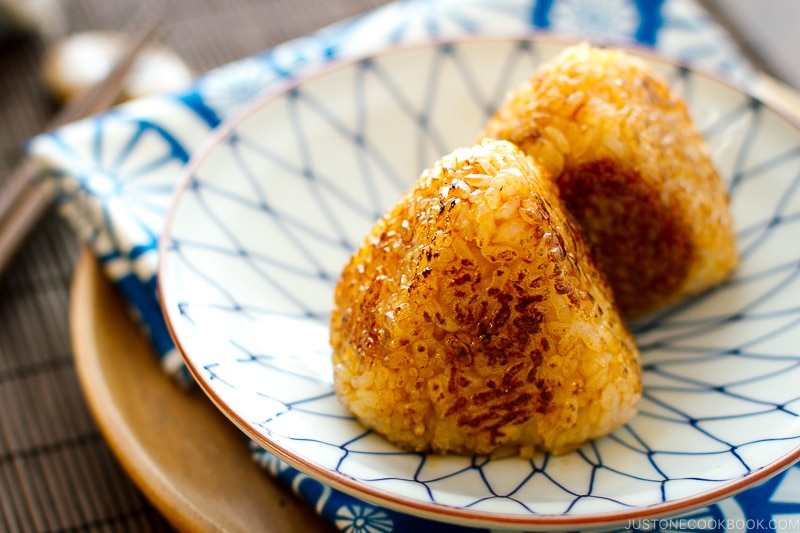
Yaki Onigiri (Grilled Rice Balls)
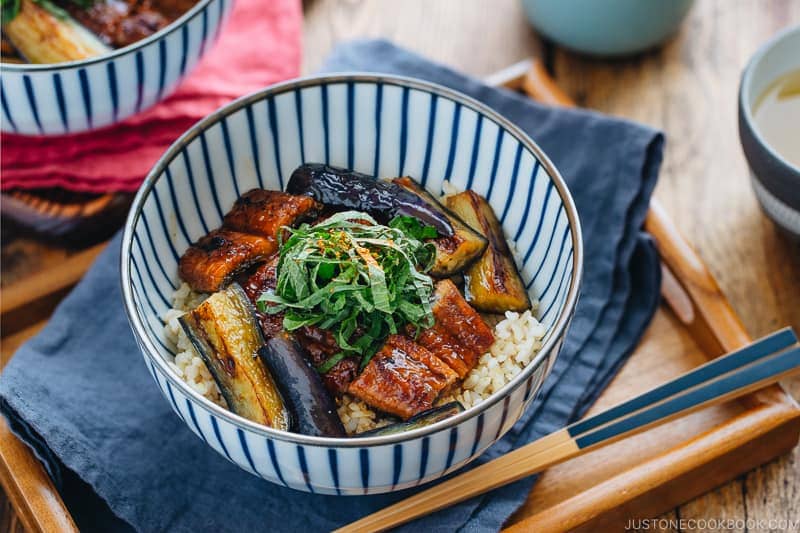
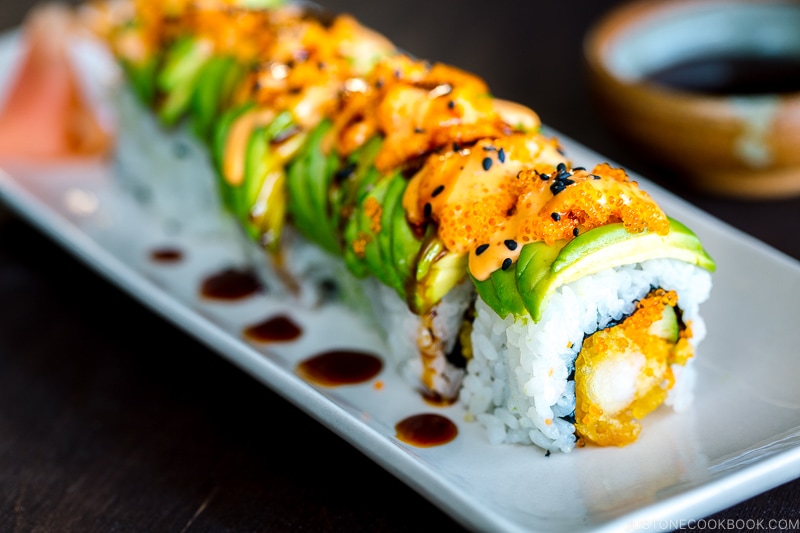
Where To Buy Eel Sauce
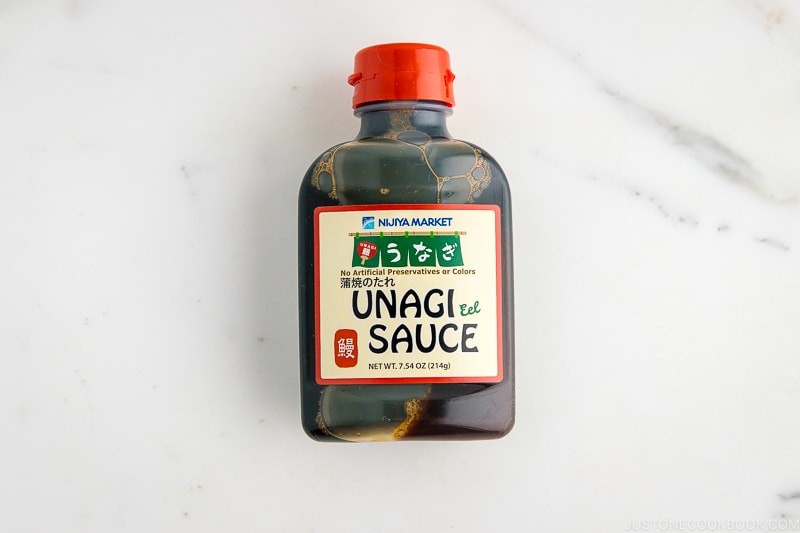
You can purchase the bottled variety in the condiment section of Japanese grocery stores and well-stocked Asian supermarkets. If that’s not an option, find it on Amazon.
How To Store
Store leftovers in an airtight container or jar in the fridge or freezer for 2-3 months.
More Authentic Japanese Sauces to Make at Home
- Teriyaki Sauce – the way we make it in Japan!
- Tonkatsu Sauce
- Ponzu Sauce
- How to Make Japanese Kewpie Mayonnaise
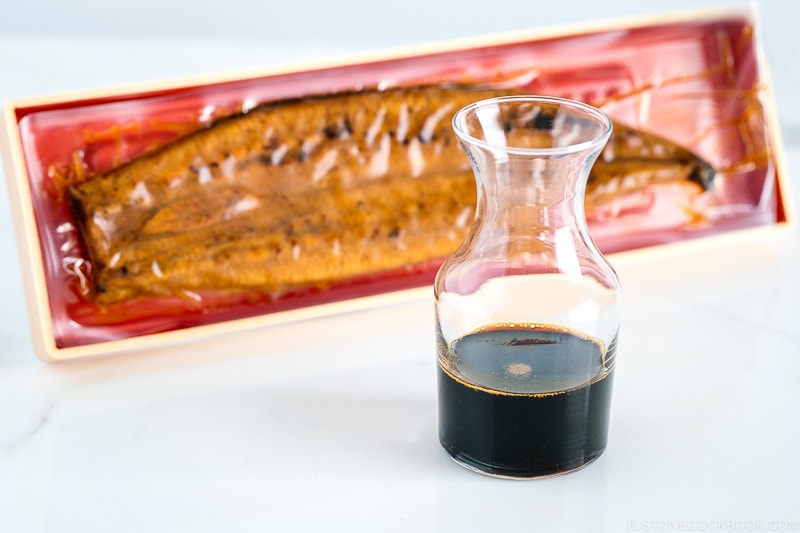
Wish to learn more about Japanese cooking? Sign up for our free newsletter to receive cooking tips & recipe updates! And stay in touch with me on Facebook, Pinterest, YouTube, and Instagram.
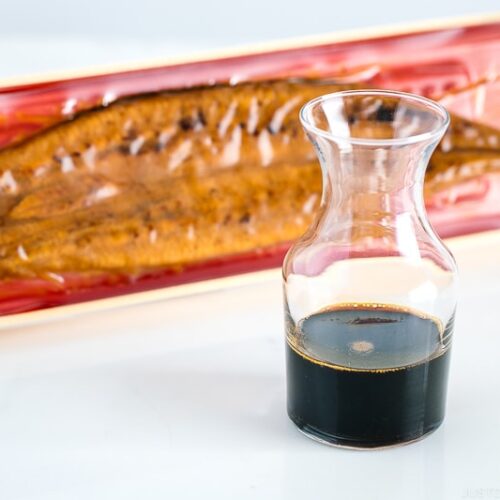
Homemade Eel Sauce (Unagi Sauce)
Instructions
- Gather all the ingredients. To make a larger batch of Unagi Sauce, see Notes below for the ingredients list.

- In a small saucepan, add ¼ cup mirin, 1½ Tbsp sake, and 2½ Tbsp sugar. Turn on the heat to medium and whisk all the ingredients together.

- Then, add ¼ cup soy sauce and bring it to a boil. Once boiling, reduce the heat to low and continue simmering for 10 minutes. Toward the end of cooking, you will see more bubbles.

- Turn off the heat and let it cool. The sauce will thicken as it cools. It‘s now ready to use.

To Use
- Use this Homemade Eel Sauce when you broil or grill freshwater eel fillets in recipes like Unadon (Grilled Eel Rice Bowl), Eggplant Unagi Donburi, and Unagi Chazuke. You can also use this versatile sauce to make Yaki Onigiri (Grilled Rice Ball) and Dragon Rolls.
To Store
- You can store the sauce in an airtight jar and keep in the refrigerator for up to 2–3 months.
Notes
For the full amount Unagi Sauce (extra will keep for 3 months)
- ¾ cup (180 ml) soy sauce
- ¾ cup (180 ml) mirin
- ½ cup (100 g) sugar
- ¼ cup (60 ml) sake
Nutrition
Editor’s Note: The post is originally published on May 6, 2013. The new images have been added to the post in May 2019.
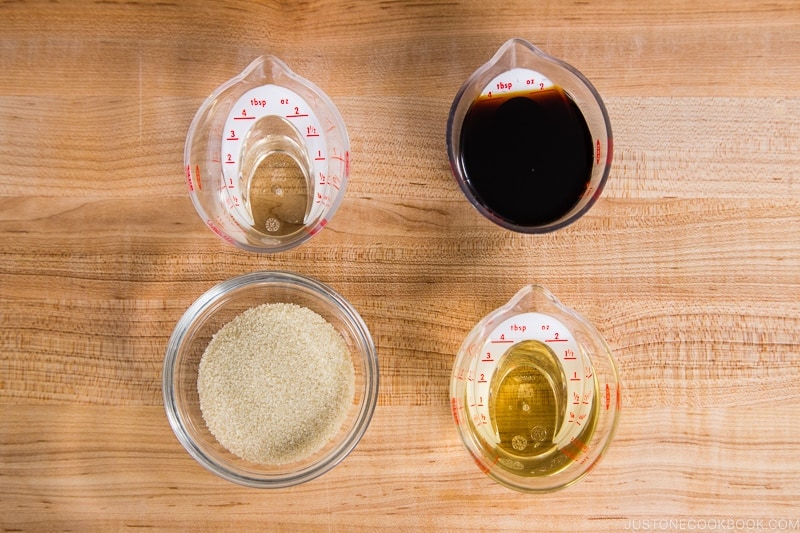


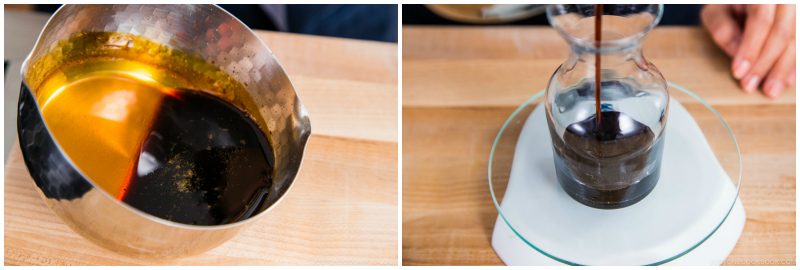











Is there a preference for the type of sugar used for this recipe?
Hi Andrea! Thank you so much for trying Nami’s recipe!
Nami uses organic cane sugar (natural blond/tanned color sugar; She gets one from Trader Joe’s), but other sugar would work.
We hope this helps!
Just wish to say your yaki onigiri and unagi sauce recipe maintain Japanese umami flavours. It never ceases to surprise me when gaijin san substitute ingredients and say it is the same. As a gaijin too
it is apparent some readers must not have ‘ lived Japan’ to appreciate the subtleties of its food and umami delights. Your site is perfect Nami san.
Hello there, Daivd! Thank you for reading Nami’s post and for your kind words.
We appreciate your love and support. Happy cooking!☺️
Spot on 🙂
This is basically Teriyaki sauce, There is no eel or fish base in the sauce. I bacally used this recipe but added fish sauce and adjusted the sugar to taste and I used agave nectar instead of sugar. Keep in mind that there is sugar in Mirin and you want a sugar salt balance
Hi William, Thank you for your feedback. Yes. There is no eel in the sauce and uses it for many dishes.
We hope you have a chance to read this recipe post. Nami explains what Eel Sauce is.🙂
As for sweetness, Mirin is our traditional ingredient, and it offers a delicate sweetness and a nice aroma to many Japanese dishes. So most Japanese recipes use Mirin and Sugar to balance the flavor and taste.
Here is a post about Mirin: https://www.justonecookbook.com/mirin/.
We hope this helps!
Lol! Talk about clueless and saying something without knowing… In asian cuisine, just because a sauce contains a certain word, in this case “eel”, it doesn’t mean it’s an ingredient necessarily but instead sometimes meant for a certain dish. And the ratios are different from teriyaki, and usually the end result consistency should be also, the unagi sauce being more thick and slightly sweeter. When you add this and that to a recipe, don’t call it so. Your version might be an excellent twist, but it’s definitely not unagi sauce. And as for mirin, sure the commercial junk is overly sweet and not at all representative of Hon Mirin which is slightly sweet with 14% alcohol and loaded with amino acids which give you that “umami” and sheen.
Ohhh myyyy god… it’s so gooood. Perfect bliss point between salty and sweetness. The taste was so addictive, couldn’t stop eating the sauce on its own haha. Thank you very much for sharing such a great yet simple recipe. It tastes even better than the one from restaurants.
Forgot to mention, I marinaded the sauce and cooked it with salmon. It made my salmon taste so divine.. ❤️😋 just have to find the way to make the skin stays crispy. Any tips? 😊
Hi Aoh! Thank you very much for trying Nami’s recipe and your kind feedback!
We are glad to hear you enjoyed homemade Unagi Sauce!
To make the skin crispy, brush the sauce and put it in the oven for a few minutes, or use a broiler and cook the skin sides until it gets crispy. You can also use Cooking Torch.
https://www.justonecookbook.com/unagi-don-unadon/
We hope this helps!
Great recipe and very simple! Do not make the same mistake as me and attempt to microwave this instead of boiling. I made a mess in the microwave lol
Hi Sushilover! Thank you for reading Nami’s post and trying her recipe!
We hope you try Nami’s Unagi recipes next time! 🤗
https://www.justonecookbook.com/unagi-don-unadon/
https://www.justonecookbook.com/unagi-chazuke/
https://www.justonecookbook.com/eggplant-unagi-donburi/
[…] from soy sauce and wasabi paste. Or get this Unagi sauce that you can drizzle on top. You can also make unagi sauce yourself! As for me, the Sushi Bake was already so flavorful I didn’t really need to add or […]
The sauce is soo good!! I don’t have sake, so i replace it with just water. It just taste like eel sauce at my favorite poke place. Now i can make my own poke at home!! How exciting!!
Hi Dmm! We are so happy to hear you found your favorite sauce!
Thank you very much for trying Nami’s recipe and for your kind feedback.🙂
Knoichiwa Namiko san…
I love JOC! its taught me so much!
I was wondering, how long can I store the tare in the fridge in an air tight container for?
Hi Ben! Thank you very much for reading Nami’s post and trying her recipe!
The sauce can be stored in an airtight jar and keep it in the refrigerator for up to 2-3 months.
We hope this helps!
yes it helps a great deal! arigatou gozaimasu! ❤️
Hi Ben, My pleasure! Thank you for trying Nami’s recipe!
For an interesting twist, try substituting maple syrup for sugar. It’s quite good and maple work well with soya.
Hi David! Awesome! Thank you very much for trying Nami’s recipe and sharing your cooking experience with us! Happy Cooking!